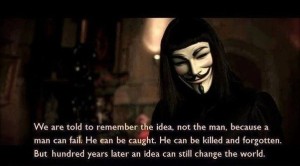 I’m teaching my workshop on dialogue this September, and so it’s a good time to bring up some tips on dialogue. A story can live or die just on dialogue. Bad dialogue will make a character flat and uninteresting, and may even send the reader running from the story–no amount of great action or terrific plot twists will save a story with weak dialogue. But great dialogue can make a reader forget to look for plot holes or poor pacing. That’s because great dialogue is where you characters can shine.
I’m teaching my workshop on dialogue this September, and so it’s a good time to bring up some tips on dialogue. A story can live or die just on dialogue. Bad dialogue will make a character flat and uninteresting, and may even send the reader running from the story–no amount of great action or terrific plot twists will save a story with weak dialogue. But great dialogue can make a reader forget to look for plot holes or poor pacing. That’s because great dialogue is where you characters can shine.
Now, learning to write great dialogue is no easy task. It takes time to figure out how to make fictional dialogue sound better than how folks talk in real life but still sound possible. All of this starts with your characters.
The workshop will go into detail on dialogue–and exercises to improve dialogue skills–but here are a few tips.
1-Get to know your characters. I don’t mean charts or lists, and I mean beyond a few scenes. How does that character lie? What are the verbal habits? Is this person a talker or not? Spend some time away from the story just getting your character talking.
2. Become a habitual eavesdropper. Listen to how real people talk–and jot down notes. Notice how real conversations usually make for terrible dialogue–there are pauses, jumps, repeated phrases and words. It is still useful to pay attention to all this stuff because this is what fiction mimics. Notice how rarely people stick to one topic. Notice slang, and how words are used as leverage. Notice how one person will speak differently to the different people in that person’s life.
3-Close your eyes in the next movie and just listen to the words. Pay attention to how dialogue–and the pauses–are used to reveal character. Listen for the emotional words. Use just your ears to get a sense of rhythm, and so you won’t be distracted by flashy visuals or the actor.
4-Take apart your favorite writers’ works. Yes, this means getting out some markers and marking up the book–ebooks readers also let you mark up books. Pause over the really great dialogue moments and look at how the words are used. Look at word choice, at sentence structure, at paragraphs and how they link.
5-Write a lot of dialogue. Write pages of the stuff. Write just dialogue–fit in any description later. Nothing helps you learn faster than writing–a lot.
6-Get the technical stuff out of the way. Dialogue can clunk with periods in the wrong places, or commas that are missing, or with quote marks that don’t make sense. All of this can trip up the reader. Buy a copy of Strunk & White’s Elements of Style and nail the punctuation so it becomes invisible.
7-Look to give your characters great lines. Think about your favorite actor playing that role–wouldn’t you want him or her to come up to you and gush about having wonderful lines. Let your characters be more witty and better than anything in real life.
8-See how long you can have a character talk and not mention the real topic. This is the art of subtext. Make what the character doesn’t say important. Make the reader want to know what the character isn’t putting into dialogue.
9-Punch and polish, and then polish some more. Great dialogue often comes with revision, rewrites, edits, and then even more edits. Polish those words. Say them aloud to see how they sound. Fall in love with those words and make them wonderful.
10-Keep learning. Some links to help you with that:
http://fictionwriting.about.com/od/crafttechnique/tp/dialogue.htm
http://www.musik-therapie.at/PederHill/Dialogue&Detail.htm
Dialogue: Don’t Let’Em Say What You Mean by Shannon Donnelly

